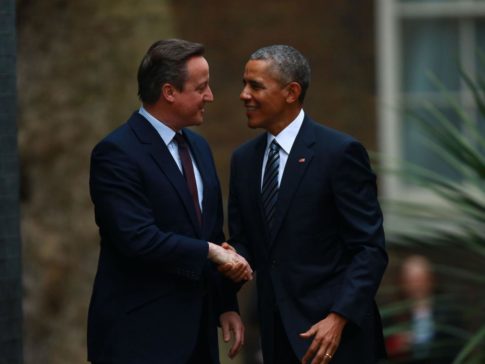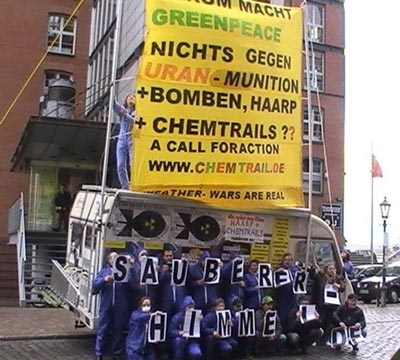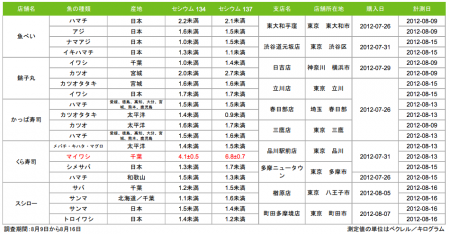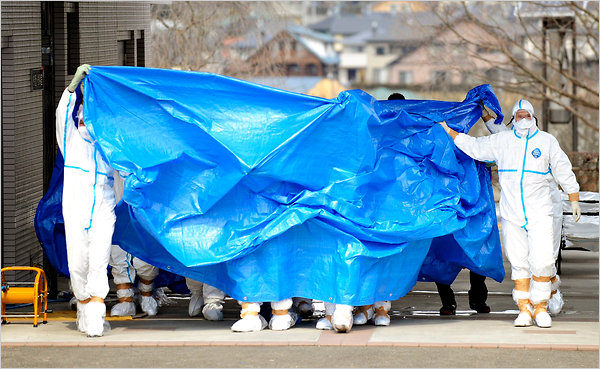When soda giant Coca-Cola was asked to participate in a survey of the world’s top six drinks manufacturers by the environmental organization Greenpeace last year, they refused. And boy, has that decision come back to haunt them! Greenpeace went ahead with their survey anyway. In the absence of full disclosure by the company itself, the environmental group examined the yearly sales figures of certain Coca-Cola products, and determined their proportion of the company’s overall packaging mix since 2012, to determine the company’s global plastic impact. Greenpeace calls its findings “eye-popping” and “breath-taking.” They found that Coca-Cola sells between 108 and 128 billion plastic bottles each year – that’s over 3,000 such bottles every second!
Greenpeace
Greenpeace TTIP Leaks: After The Leaks Showed What It Stands For, This Could Be The End For TTIP
– After the leaks showed what it stands for, this could be the end for TTIP (The Independent):
The documents show that US corporations will be granted unprecedented powers over any new public health or safety regulations to be introduced in future. If any European government does dare to bring in laws to raise social or environmental standards, TTIP will grant US investors the right to sue for loss of profits
Today’s shock leak of the text of the Transatlantic Trade and Investment Partnership (TTIP) marks the beginning of the end for the hated EU-US trade deal, and a key moment in the Brexit debate. The unelected negotiators have kept the talks going until now by means of a fanatical level of secrecy, with threats of criminal prosecution for anyone divulging the treaty’s contents.
Now, for the first time, the people of Europe can see for themselves what the European Commission has been doing under cover of darkness – and it is not pretty.
Greenpeace TTIP Leaks
Greenpeace Netherlands has released secret TTIP negotiation documents. We have done so to provide much needed transparency and trigger an informed debate on the treaty. This treaty is threatening to have far reaching implications for the environment and the lives of more than 800 million citizens in the EU and US.
Whether you care about environmental issues, animal welfare, labour rights or internet privacy, you should be concerned about what is in these leaked documents. They underline the strong objections civil society and millions of people around the world have voiced: TTIP is about a huge transfer of power from people to big business.
You can download all the documents below, as a whole and per chapter. For more background info on the content of these documents and TTIP in general, please check . Press contacts can be found .
Robot Bees Will Be Better Than The Real Thing Says Greenpeace (Videos)
From the article:
“This is already happening, as wherever high tech is present, so is the military. Here is a video from the Air Force illustrating the multi-purpose aspect of what is being proposed: not only surveillance, not only autonomous insect swarms, but also assassinations.”
– Robot Bees Will Be Better Than The Real Thing Says Greenpeace (Natural Blaze, May 06, 2014):
No, this is not a tabloid – it’s real. According to several videos, which are posted below, robotic insects have made their first controlled flight. According to the creators of Robobee:
“The demonstration of the first controlled flight of an insect-sized robot is the culmination of more than a decade’s work . . . Half the size of a paperclip, weighing less than a tenth of a gram, the robot was inspired by the biology of a fly, with submillimeter-scale anatomy and two wafer-thin wings that flap almost invisibly, 120 times per second.”
Read moreRobot Bees Will Be Better Than The Real Thing Says Greenpeace (Videos)
Greenpeace Co-Founder Questions Manmade Global Warming (Video)
FYI …
… and for your disinformation.
YouTube Added: Jan 23, 2011
Description:
Patrick Moore, co-founder of the environmental organization Greenpeace, isn’t too hot about global warming. Appearing on Fox Business Network with Stuart Varney on Thursday, he said global warming is a “natural phenomenon,” there’s no proof of man-made global warming, and suggested that “alarmism” is driving politicians to create bad environmental policies. He also said he’s not More..the only environmentalist that believes like him:
Moore is the author of the book, “Confessions of a Greenpeace Dropout: The Making of a Sensible Environmentalist,” in which he exposes the green movement and explains why he left the organization.
While talking with Varney, he explained that departure was in part due to the group’s “extremist positions” and it being hijacked by political and social causes as well as the left.
Greenpeace: Fukushima City Playgrounds Are Still Highly Radioactive (200 Times Normal)
– Greenpeace: Fukushima victims are victims once again (DW, March 7, 2013):
Two years after the Fukushima nuclear disaster, radiation levels in the city of the same name remain far higher than normal. Heinz Smital, of Greenpeace, believes residents are being kept in the dark over the dangers.
You recently measured the radioactivity in and around Fukushima for Greenpeace Germany. What were your findings?
The radioactivity there is still very high. In the city of Fukushima, which has some 300,000 inhabitants, there are still children’s playgrounds that are highly contaminated. The values we measured there on the ground were 200 times higher than before the nuclear accident. In the evacuated ghost towns where there has been a great effort to clean things up, we have found that the radiation has not declined. It simply isn’t going away. While the cleanup may have been 20 to 50 percent effective, the radiation level is still too high for people to be able to return to a normal life.
So, people are not going to be allowed to move back there at all?
Read moreGreenpeace: Fukushima City Playgrounds Are Still Highly Radioactive (200 Times Normal)
Greenpeace Wants Nuclear Plant Suppliers Held Accountable For Fukushima Crisis
– Greenpeace wants nuclear plant suppliers held accountable for Fukushima crisis (Japan Times, Feb 20, 2013):
The international environmental group Greenpeace launched an online campaign Tuesday saying nuclear power plant manufacturers should be held accountable for the crisis at the Fukushima No. 1 power plant.
Greenpeace wants Japan’s law on compensation for nuclear damage to be revised so that the companies who designed and built the reactors pay as well.
Read moreGreenpeace Wants Nuclear Plant Suppliers Held Accountable For Fukushima Crisis
Greenpeace Exposed: ‘Why Does Greenpeace Do NOTHING About Depleted Uranium, HAARP And Chemtrails?’
Press statement in English, Italian, French and Greek: HERE
In German: Here
– Press release from 7.10.2011– Concerned citizens demand action from Greenpeace (Chemtrail.de, Werner Altnickel):
Press release from 7.10.2011
Concerned citizens demand action from GreenpeaceWith a 16 square-metre banner with the inscription “Why does Greenpeace do nothing about uranium munitions and bombs, HAARP, chemtrails? – A Call for Action” (see photograph) and placards with other slogans, the long-term chemtrails activist Werner Altnickel, together with concerned fellow activists from the citizens’ initiative “Sauberer Himmel” (clean sky) (www.sauberer-himmel.de), demonstrated in front of Greenpeace’s headquarters in Hamburg, demanding action from Greenpeace.
Greenpeace’s earlier slogan in German “Taten statt Warten” (action instead of waiting) seems in the case of these subjects to have mutated into “waiting instead of action”. Greenpeace has withdrawn to passive positions, trusting blindly in state and private institutions and doing no related research itself. The “air measurement bus” has been sold, for example. Why? Is air pollution a thing of the past? Or is the problem that one might be embarrassed to find something in the air other than, say, diesel exhaust?
Werner Altnickel also argues that the “Peace” in Greenpeace’s title years ago lost its justification and should be removed from the name, as Greenpeace for a long time has taken no action against the wars started by NATO, e.g. in Afghanistan, Iraq and now Libya. Hundreds of thousands of civilian victims and huge areas of ruined land seem to play no role any more for Greenpeace. From Greenpeace, the action group working with Werner Altnickel demands independent research and taboo-free involvement on the following subjects:
Uranium munitions
Greenpeace Detects Cesium-137 In Sushi Sold In Tokyo
– Greenpeace detected cesium from Sushi sold beside Shinagawa station in Tokyo (Fukushima Diary, Sep 9, 2012):
Eating Sushi is becoming like Russian roulette.
Greenpeace measured 10.9 Bq/Kg of cesium from Sushi in Tokyo. The amount of strontium is not known.
On 9/7/2012, Greenpeace published their measurement result. They conducted a spot check of sushi at 10 shops of Tokyo, Kanagawa and Saitama. The targets were 5 major sushi chain stores. (7/20 ~ 8/16/2012) They took 4 samples from each sushi chain store.
They measured 4.1±0.5 Bq/Kg of Cs-134, 6.8±0.7 Bq/Kg of Cs-137 from one of the 20 samples purchased at “Kura zushi. The branch is in front of Shinagawa station of Tokyo. The ingredient was Japanese sardine.
They didn’t measure cesium from the rest of 19 samples, but the detectable amount was 5 Bq/Kg.
Read moreGreenpeace Detects Cesium-137 In Sushi Sold In Tokyo
Greenpeace Activist Paraglides Into French Nuclear Plant
– Greenpeace activist paraglides into French nuclear plant (Reuters, May 2, 2012):
A Greenpeace activist dropped a smoke flare as he flew over a French nuclear reactor on a paraglider on Wednesday, seeking to draw attention to what green activists call gaps in nuclear security four days before a presidential election runoff.
The plant’s owner, EDF, confirmed an engine-powered paraglider had landed within its Bugey nuclear site in southeastern France.
The pilot flew over the plant and threw a red-smoke flare on the roof of a building before landing, television images showed.
“At no moment was the safety of the installations at risk,” EDF said in a statement, adding that the pilot was caught by the police in charge of protecting the site.
Read moreGreenpeace Activist Paraglides Into French Nuclear Plant
Russian Expert: Fukushima Situation Far From Stabilizing
??Download (MP3)
– Fukushima situation far from stabilizing-expert (Voice Of Russia, Dec 13, 2011):
Vladimir Chuprov, the head of the energy department of Russia’s Greenpeace:
The situation at the moment at Fukushima in Japan at whole is not stabilized. The dangerous radionuclides such as Cesium 137 is identified in the children food, that the food, especially the sea-food is contaminated and local organizations like Green Peace from time to time publish lists of such food that is dangerous for the health.
From the economical point of view the situation will ask about 1 trillion yens, which is around up to 100 billion dollars to stabilize the company, which operates the nuclear power plant, which means that all the situation is far out of stabilizing both from environmental, economical and social point of views.
The consequence of such situation is the further recognizing dangers of nuclear power not only in Japan, but all over the world. It would mean that the government has to decide where to put money the best, and from my point of view it should be green energy renewable first of all, as an alternative for nuclear industry.
Japan Residents Running Out Of Safe Food
– We are running out of safe food (Fukushima Diary, Nov. 17, 2011):
I used to think canned food was ok, but even that was an illusion.
Greenpeace measured canned fish.
The samples were taken from 15 branches of 5 major super market chains from North Japan to Kanto area. The measurement was conducted in October.
As a result, they measured cesium from 27 of 75 canned fish.
They announced it on 11/16/2011.
Eg,4.6 Bq/Kg from canned chub mackerel.
This seems to be merely a beginning of the huge food problem. Greenpeace is expected to conduct continuous surveys.
(Source)
Greenpeace has also measured variety of sea food sold at major supermarkets.
The data is below.
Over 50% Of Tested Seafood Samples From Japanese Supermarkets Contain Radioactive Cesium
– Greenpeace criticises Japan radiation screening (AFP, Oct. 20, 2011):
TOKYO — Greenpeace called on Tokyo to toughen radiation screening and food labelling rules on Thursday after it said low levels of radiation had been detected in seafood sold at Japanese stores.
The environmental pressure group said it tested 60 seafood samples bought at stores in eastern Japan operated by five major supermarket chains and found 34 of them with radioactive caesium-134 and caesium-137.
The survey discovered readings of up to 88 becquerel per kilogram with the radiation believed to be from the ongoing nuclear accident.
“While the samples are well below the 500 becquerel per kilogram limit set by the authorities, the contaminated seafood still represents a health risk, especially to pregnant women and children, and it is being distributed over a wide area,” said Wakao Hanaoka, Greenpeace Japan oceans campaigner.
The Japanese standard compares with a 150 becquerel per kilogram limit in Ukraine after the 1986 Chernobyl disaster, the group said.
“More concerning, however, is that there is no labelling that notifies consumers if the seafood had been screened, making it impossible for them to make informed decisions,” Hanaoka said in a statement.
Read moreOver 50% Of Tested Seafood Samples From Japanese Supermarkets Contain Radioactive Cesium
Greenpeace: Fukushima Schools Unsafe For Children With Radiation Readings As Much As 70 Times Above Safety Limit
– Greenpeace: Fukushima schools unsafe after clean-up (Reuters, Aug 29, 2011):
Greenpeace said on Monday that schools and surrounding areas located 60 km (38 miles) from Japan’s tsunami-hit nuclear power plant were unsafe for children, showing radiation readings as much as 70 times internationally accepted levels.
The environmental group took samples at and near three schools in Fukushima city, well outside the 20 km exclusion zone from Tokyo Electric Power’s stricken Fukushima Daiichi nuclear complex in Japan’s northeast.
“No parent should have to choose between radiation exposure and education for their child,” said Kazue Suzuki, Greenpeace Japan’s anti-nuclear project head.
Fukushima = Chernobyl x 18.51 – Fukushima Water 144 Times As Radioactive As Anticipated – Water Treatment System Halted
18.51 = 144 x 720,000 : 5,600,000
– Contaminated Water Processing at #Fukushima: The Water Was Simply Too “Hot” (EX-SKF, June 19, 2011):
for the system to handle, TEPCO found out.
From Asahi Shinbun (1:02PM JST 6/20/2011):
?????????????????????????????????????????????????????????????????????????????????????????????????????????????
TEPCO investigated the contaminated water treatment system that was halted [when the radiation on the Kurion’s subsystem exceeded the limit (4 millisieverts/hour) set by TEPCO] and announced on June 20 that the problem was caused by the flow of the water that contained much more radioactive materials than expected. TEPCO is conducting the test again to measure the radiation level.
Well, over 100,000 tonnes of highly contaminated water at Fukushima I Nuclear Power Plant are estimated to contain 720,000 terabecquerels of radioactive materials.
If Kurion’s vessel absorbed enough radioactive materials in 5 hours and it should have taken 30 days, as I wrote in my previous post, the water was 144 times as radioactive as the system had anticipated.
If the water actually turns out to be 144 times as radioactive, the Fukushima accident would need a new INES category and should not be placed in the same category (Level 7) as the Chernobyl accident which released only 5.6 million terabecquerels of radioactive materials. Maybe it should be simply called “Level Fukushima”.
See also:
– Fukushima Now Equal To 50 Plus Chernobyls & 3,000 Billion Lethal Doses Of Radiation
– Fukushima: Three Million of Millions of Potential Lethal Doses (PDF)
On March 15:
As Robert Alvarez, a former nuclear energy adviser to President Bill Clinton, has written, if these waste containers, euphemistically called “ponds,” were to be damaged in an explosion and lose their cooling and radiation-shielding water, they could burst into flame from the resulting burning of the highly flammable zirconium cladding of the fuel rods, blasting perhaps three to nine times as much of these materials into the air as was released by the Chernobyl reactor disaster. (And that’s if just one reactor blows!) Each pool, Alvarez says, generally contains five to ten times as much nuclear material as the reactors themselves. Alvarez cites a 1997 Nuclear Regulatory Commission study that predicted that a waste pool fire could render a 188-square-mile area “uninhabitable” and do $59 billion worth of damage (but that was 13 years ago).
Fallout! (60 Minutes): Japan’s Recovery Won’t Be Measured In Years, But Centuries – Michio Kaku: These Humans Are Guinea Pigs!
Don’t miss to watch the video:
– Fallout! (60 Minutes, June 17, 2011):
When Japan was rocked by a massive earthquake and tsunami back in March, we told ourselves the worst was behind us.
Tens of thousands dead, an economy shattered, whole communities razed.
Surely the Japanese had suffered enough.
But all these weeks later, the crisis is far from over.
The crippled Fukushima nuclear plant is still leaking and, judging from the experience at Chernobyl, Japan’s recovery won’t be measured in years, but centuries.
Full transcript: LIZ HAYES: On Japan’s eastern shores where thousands of people once lived there are now only neat piles of rubble and an eerie silence to mark the tsunami that so devastated a nation. But it’s not long before that silence is shattered signalling there’s another disaster looming. What’s it saying, Frank?FRANK JACKSON: It’s nothing like it’s said before.
LIZ HAYES: We’re heading for ground zero of Japan’s nuclear crisis the meltdown of the Fukushima power plant. It’s more than 20km away, but already we’re picking up its deadly fallout.
FRANK JACKSON: The radiation is building, the further we go in so it’s going to be too dangerous to carry on.
LIZ HAYES: So we actually have to stop here.
FRANK: Yep. I’m not willing to take you any further.
LIZ HAYES: Radiation expert Frank Jackson and his Geiger counters tell us we’ve already come too far. Even the protective gear is not enough?
FRED: Gamma is the strongest form of radiation it will go through most things apart from lead.
LIZ HAYES: Well, that’s the type of radiation we want to avoid.
FRED: It is. Yeah.
LIZ HAYES: Fukushima a major supplier of Japan’s power once looked like this. These shocking new images show the moment the tsunami smashed into the plant triggering a series of fires and explosions. Just 200 kilometres from Tokyo, three of the six nuclear reactors at Fukushima are now in meltdown and deadly radiation has already leaked into the sea and air.
MICHIO: They say the reactor is stable, yes, that’s true. Stable like you’re hanging on the edge of a cliff hanging by your fingernails and that one by one your fingernails start to crack. That’s stability. In other words, it’s a race against time.
LIZ HAYES: If you thought nuclear disaster had been averted in Japan, then meet physicist, Michio Kaku.
MICHIO: If you’ve been exposed because you’re an atomic worker, even after you’re long dead and buried your gravesite will be radioactive. Your great grandkids can come with Geiger counters and see that great granddaddy still has radiation at his gravesite.
LIZ HAYES: Are you serious?
MICHIO: I’m serious
LIZ HAYES: The death and destruction, the displacement of so many families has been quite shocking and radioactive contamination just adds another layer to what is already an unspeakable tragedy, these were obviously people’s homes but because the nuclear plant is just 20 kilometres the decision to return rebuild may well be out of their hands. More than 135,000 people have been forced to evacuate. The streets, in towns and villages are now mostly deserted. And locals have been told their food and water may be contaminated. Shall we test these?
FRED: There’s the same as an X-ray according to this.
LIZ HAYES: So every time you have a cabbage you have an X-ray.
FRED: Yep.
LIZ HAYES: These are Japan’s radiation refugees, thousands who are now living in cardboard shelters sleeping on the floors of public buildings with few possessions and little privacy and facing a future that doesn’t seem to offer much more. When you look at this I do feel like I’m looking through someone’s window. People have gone to a lot of effort to try and make a cardboard box home.
CHIA: Yeah, I’m surprised to see there are photographs and all the book shelves built up.
LIZ HAYES: Many Japanese people, like Chia Matsumoto fear their country will never fully recover. Do you think you’ll ever be able to take food, water, the air you breathe for granted again?
CHIA: Ah, knowingly no, I don’t think so. I just have to believe that that’s safe to eat or drink. But somewhere in my mind I’m sure I know and I always suspect or always doubt is this, I have to ask myself “is this is okay, or if I do this, is it going to show in my health in a few years’ time. I already do.”
MICHIO: These are guinea pigs in some sense. Human guinea pigs to see exactly how radiation disperses in the environment and exactly how it’s incorporated into people’s bodies and into their children’s bodies and as the years and decades go by we’ll see an increase in cancer.
Chief Nuclear Engineer Arnie Gundersen: Hot Particles From Tokyo To Seattle Virtually Undetectable When Inhaled Or Swallowed – Metallic Taste In Mouth As A Sign Of Radiation Exposure
Added: 12.06.2011
Original estimates of xenon and krypton releases remain the same, but a TEPCO recalculation shows dramatic increases in the release of hot particles. This confirms the results of air filter monitoring by independent scientists.
Fairewinds’ Arnie Gundersen explains how hot particles may react in mammals while escaping traditional detection. Reports of a metallic taste in the mouth, such as those now being reported in Japan and on the west coast, are a telltale sign of radiation exposure.
Nuclear Fuel Has MELTED THROUGH Base Of Fukushima Plant (Telegraph)
– Nuclear fuel has melted through base of Fukushima plant (Telegraph, Jun 9, 2011):
The nuclear fuel in three of the reactors at the Fukushima Dai-Ichi nuclear plant has melted through the base of the pressure vessels and is pooling in the outer containment vessels, according to a report by the Japanese government.
The findings of the report, which has been given to the International Atomic Energy Agency, were revealed by the Yomiuri newspaper, which described a “melt-through” as being “far worse than a core meltdown” and “the worst possibility in a nuclear accident.”
Read moreNuclear Fuel Has MELTED THROUGH Base Of Fukushima Plant (Telegraph)
Greenpeace: Widen Evacuation Zone To At Least 60 Or 70 km From Fukushima Plant – Team Of Radiology Experts Find 45 Microsieverts Per Hour Alongside A School Zone
– Widen evacuation zone for children, pregnant women: Greenpeace chief (Japan Times, June 10, 2011):
The government should consider evacuating children and pregnant women from a wider area around the Fukushima No. 1 power plant because radiation levels remain high even outside the 20-km no-go zone, Kumi Naidoo, executive director of Greenpeace International, said Thursday in Tokyo.
Naidoo’s team of radiology experts found hot spots that had a maximum hourly reading of 45 microsieverts of radiation alongside a school zone.
Secondary Radiation Contamination In Tokyo
– #Radiation in Tokyo: It’s Already a Secondary Radiation Contamination in Koto-Ku (EX_SKF, June 8, 2011):
So the Tokyo Metropolitan government finally admitted to the high air radiation level in “Nanbu Sludge Plant” in Ota-ku in Tokyo, after, it turns out, a Tokyo Metropolitan Assemblyman from Ota-ku went inside the plant and measured the radiation.
“Tobu” or Eastern, Sludge Plant in Koto-ku in Tokyo has an even higher level of radioactive cesium, and the plant may have been spewing radioactive cesium from the incinerator where the radioactive sewage sludge is burned, and has been contaminating the air and the soil in the areas around the plant and downwind (upstream) areas along the Arakawa River.
So it’s a secondary radiation contamination.
The eastern part of Tokyo has been registering higher air radiation levels than the western part of Tokyo. Unchecked cesium dispersion from the sludge plant ever since the start of the Fukushima I Nuke Plant accident may be good part of the reason.
And we wouldn’t have known if it were not for the very concerned parents in Koto-ku who decided to organize themselves and ask a researcher from Kobe University to help them measure the radiation.
From Tokyo Shinbun (6/8/2011):
?????????????????????????????????????????????????????????????????????????????????????????????????????????
“Koto Association to Protect Children (????????)” held a press conference in the Tokyo Metropolitan Government Building on June 7, and announced the result of its own survey showing the high level of radioactive cesium detected from the athletic ground near the sewage sludge processing plant “Tobu (eastern) Sluge Plant”.
Radioactive Tea: More Than 679 Becquerels Of Radioactive Cesium Per Kg In Shizuoka Motoyama Tea
Before:
The ‘500 becquerels per kilogram safety government standard’ has NOTHING to do with safety. And if you have followed all my posts on the effects of low-level radiation and internal emitters & radiation, then you know exactly why.
– Tea From Shizuoka Exceeds Radioactive Standard After Quake (Bloomberg, Jun 9, 2011):
Tea from Japan’s Shizuoka prefecture had above-standard radioactive cesium levels three months after an earthquake led to radiation leaks at a nuclear plant about 360 kilometers (224 miles) from the area.
The dried leaves had 679 becquerels of cesium per kilogram, more than the 500 becquerels per kilogram safety government standard, according to a faxed statement from the local government today. The contamination was found in leaves from the prefecture’s Warashina area, while tea produced in all 18 other areas had safe levels, based on tests conducted by tea farmers, according to the statement.
Shizuoka Governor Heita Kawakatsu last month said tests on fresh tea leaves and drinks showed they contained cesium amounts below the government safety limit. The government on June 2 decided to curb shipments of dried tea leaves containing more than 500 becquerel per kilogram of radioactive cesium and ordered a halt in deliveries from the eastern prefectures of Ibaraki, Chiba, Kanagawa and Tochigi where tainted produce was detected.
Shizuoka, which accounts for about 40 percent of the nation’s tea output and lies southwest of Tokyo, asked the farmers that produced the contaminated leaves to recall those products and halt shipments.
Japan’s tea production, including fresh and dried leaves, was worth 102.1 billion yen ($1.3 billion) in 2009, according to the agriculture ministry.
– ????????????????????? (Yomiuri Shimbun, June 09, 2011):
Google Translation:
Radioactive cesium standard over part of Shizuoka tea Motoyama
Special Primary Hukushima
Shizuoka Prefecture on May 9, the first crop harvested as hay, Aoi-ku Shizuoka City School District, worked “Motoyama tea (Macha and the UK)” Provisional Regulations on the part of the country’s tea production (500 becquerels per gram 1 kg) announced that it has been detected more than 679 becquerels of radioactive cesium.
Greenpeace Radiology Experts Find High Levels Of Radiation Beyond No-Go Zone
(Japan Times) — Radiology experts from Greenpeace urged the government Wednesday to expand the evacuation zone around the Fukushima No. 1 nuclear plant after they found high levels of radiation outside the 20-km mandatory no-go zone.
Jan van de Putte, the radioactivity safety adviser of the NGO, said the survey, taken on a road between the villages of Iitate and Tsushima in Fukushima Prefecture, saw a radiation level of 100 microsieverts per hour, despite being outside of the evacuation area.
One would reach the annual legal limit of 1,000 microsieverts — or 1 millisievert — of radiation in about 10 hours in such an environment, van de Putte said, adding that it is likely the people living in Iitate, about 9 km outside the no-go zone, “have surpassed that level” of exposure already.
Read moreGreenpeace Radiology Experts Find High Levels Of Radiation Beyond No-Go Zone
Greenpeace Investigation: GM Rice Contamination In China’s Emergency Grain Stores
China’s ban on GM rice questioned as environmental activists discover unapproved transgenic products at two grain sources
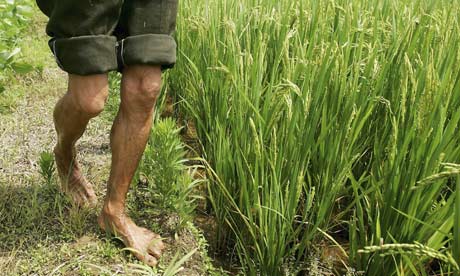
A Chinese rice farmer in the Hunan province of China. (Getty Images)
China’s state grain reserves have been contaminated by illegal, genetically modified rice, according to an investigation by Greenpeace.
The environmental group says it has found tainted samples at two rice processing enterprises that source their products from the strategic food reserve.
It is feared the transgenic products, which have not been approved as safe for public consumption, will spread nationwide because the reserves sell food and distribute emergency supplies during floods, droughts and other disasters.
The affected rice is believed to have originated in Hubei province – a centre of grain production and the site of field tests for strains containing the Bt63 gene, which repels insects.
Earlier this year, Greenpeace activists said they had found batches of genetically modified rice seeds in Hubei and its neighbouring province, Hunan.
They also found illegal GM rice on sale at Wal-Mart and Zhongbai supermarkets.
Read moreGreenpeace Investigation: GM Rice Contamination In China’s Emergency Grain Stores
Cap and Trade Is a Gigantic Scam
As I pointed out in December:
James Hansen – the world’s leading climate scientist fighting against global warming – told Amy Goodman this morning that cap and trade not only won’t reduce emissions, it may actually increase them:
The problem is that the emissions just go someplace else. That’s what happened after Kyoto, and that’s what would happen again, if-as long as fossil fuels are the cheapest energy, they will be burned someplace. You know, the Europeans thought they actually reduced their emissions after Kyoto, but what happened was the products that had been made in their countries began to be made in other countries, which were burning the cheapest form of fossil fuel, so the total emissions actually increased…
Environmental groups such as Friends of the Earth and Greenpeace are also against cap and trade (and see this and this), as is the head of California’s cap and trade program for the EPA.
Hansen also told Goodman that (notwithstanding Paul Krugman’s assertions) most economists say that cap and trade won’t work:
I’ve talked with many economists, and the majority of them agree that the cap and trade with offsets is not the way to address the problem.
As I have previously pointed out:
